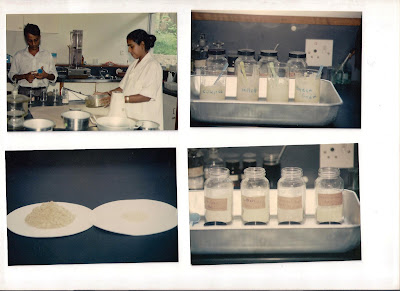“Tea is the most common consumed
drink in the world after water with a per capita worldwide consumption of around
0.12 litre per year”
Black, oolong, green and white tea are all an agricultural product from the leaves of Camellia sinesis. The differences in colour and taste are related to processing methods. Tea has been consumed over centuries around the world and has health benefits along with potential drawbacks, some of which are highlighted below.
Potential Benefits
Tea contains one of the highest
contents of flavanoids and catechins (a group of flavanoids),
which are types of antioxidants. Many
studies have shown positive health effects of drinking tea. An explanation to
this includes the high levels of flavonoids that protect cells and tissues in
the body from oxidative damage by scavenging oxygen-free radicals. Many human
intervention studies with green tea and black tea have shown a significant
increase in plasma antioxidant capacity in humans about 1 hour after
consumption of tea.
Potential Drawbacks
However, tea contains a substance
called oxalate, whereby an overconsumption leads to binding with free calcium
in the body. Extreme overconsumption can eventually cause kidney stones. Tea
also contains tannin, which is an astringent, bitter polyphenolic compound. High
amounts of tannins decrease the efficiency in converting the absorbed nutrients
into the body, such as iron; which can lead to anemia. There is also a small
amount of caffeine (form of an addictive drug) in tea and an overuse can lead
to side effects, such as sleep disorders.
In Sri Lanka, tea is consumed at
least 3-4 cups a day, at home or from shops. The longer tea is brewed or the
more tealeaves are re-used, the higher the build up of tannins. Drinking tea
with a high content on tannins with meals can lead to iron deficiency.
Green Tea
Green tea has been consumed for over
centuries and even used as Chinese medicine. It is a non-fermented tea, which
contains more catechins compared to black tea. Its extract has shows to lower
LDL cholesterol (risk factor for heat disease and diabetes), has an
anti-hypertensive effect, body weight control and other physiological
functions.
Recommendations:
§ Drink black/green tea 2 hours prior or post a main meal (i.e.
breakfast, lunch, dinner), as to not decrease your iron stores.
§ Do not re-use
your tealeaves more than once as it builds up tannins. Instead, you can use the
used up tealeaves as compost for your plants as it is rich in nutrients.
§ Do not brew your tea for longer than
1 minute, as the longer you brew
(i.e. the darker your tea), the more tannins build up.
§ Adding citrus, such as lime juice to your green tea can lower the pH in
the small intestine, thus causing more catechins to be absorbed.
§ Do not rely solely on green
tea/black tea in helping you to reduce weight or better your health status,
instead combine the occasional cup of tea with regular exercise and a healthy diet.
References:
Graham HN. Green tea composition, consumption and polyphenol chemistry.
Preventive medicine. 1992; 21(3): 334-350
King-Thom C, Tit Yee W, Cheng-I W, Yao-Wne H, Yuan L.
Tannins and human health: a review. Critical Reviews in Food Science and
Nutrition.1998: 38(6) 421-464.
Information by Dr. Renuka Jayatissa








